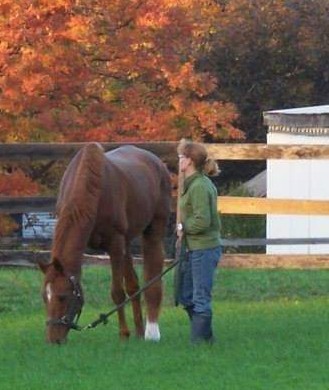Cliff notes version: mare developed cellulitis in the LH 2 weeks ago today. Has been on SMZ’s for 11 days now. Friday (yesterday) RH has developed swelling and warmth. Vet appt scheduled for this afternoon. Apparently SMZ’s are not enough. What other antibiotics are used, that are not IV? What questions should I be asking my vet? What else can I do?
The longer version: Saturday evening March 4 I brought mare in and thought she was walking funny. Put her in wash stall, hosed down mud, etc., looking for anything. Stood the whole time with the LH in the air. Walked her to stall, she was markedly unhappy about putting weight on that leg. Towel dried legs, reached for fetlock to pick hoof, she kicked at me. It was warm - compared to the other leg - but not hot. Hmm. Closed her in her stall just in case of injury, since I didn’t know what I was dealing with. She was also very ‘down’ - not interested in her food, and not wanting to move. I left, came back about 3 hours later to check on her and she was eating, drinking and seemed “okay”.
Sunday morning BO told me the horses had been running very hard (playing, and she’s a TB) so my initial assumption was “what did you break/tear/strain”? Continued to cold hose and keep her quiet in her stall. Also noticed marked swelling around the fetlock area.
Monday 3/6 turned her out in arena to see how much of the swelling was injury vs. stocking up. She was very quiet, moseyed around gently. I left her out under supervision for ~hour and noticed the more she moved the more lame she got. Called vet immediately. Got appt for Weds 3/8.
Weds 3/8, first thing vet did was pull blood. The blood “count” was 174 and normal is 0-20, so definitely an infection. Also noticed a strong pulse. Looked for abscess, no reaction to hoof testers. Did xray, ultrasound of leg, no injury noted, just lots of fluid. Poulticed the hoof just in case, wrapped the leg up to the hock. Told me stall rest, abx, bute, could take the wrap off in 3 days.
Within a couple days of abx she was moving fine.
Sunday 3/12 took wrap off. Swelling down, nothing on hoof poultice. Turned her out in arena since she’s not injured and threatening to tear the stall down, lol. She was moving just fine and feeling very good.
Wednesday 3/15 talked to vet again just to be clear on what next and when can I/should I turn her out. Vet was pleased with progress so far and encouraged me to ride her and get her moving. Opened her stall up into her run.
Thursday 3/16 first day back outside in pasture. Ran and played and looked fine. Rode her that afternoon, she was pretty darn quiet. A little too quiet for a horse that had been locked up for over a week, not ridden and well fed. But, weather was lovely warm day, so?
Friday 3/17, now the RH is swelling. WTH? She seems okay so what gives? It’s a bit warm too. Turn her out, she trots off and I’m immediately suspicious she looks off to my eye. Call vet, ask for a call, make preemptive appt for this upcoming week, just in case. Come back out yesterday afternoon to find the RH (and the left) more swollen, warm, somewhat tender to the touch. Cold hose legs, clean off mud. Walk her to stall. Called vet again, have appt for this afternoon (Sat 3/18).
She’s not lame at the walk, but her demeanor is not right. She looks sick, to me, her eyes just don’t look right. Left her to eat. Came back about 3 hours later to give abx and dinner. Took temp, was 100.5. Warm day (mid 60’s), so it’s WNL.
If you’ve made it this far, thank you. What do I need to be asking? What should I know? I’ve googled and read every single thing I can find on cellulitis, but it’s all more about ‘what’ it is rather than how it’s treated.
Thoughts? Experiences?







